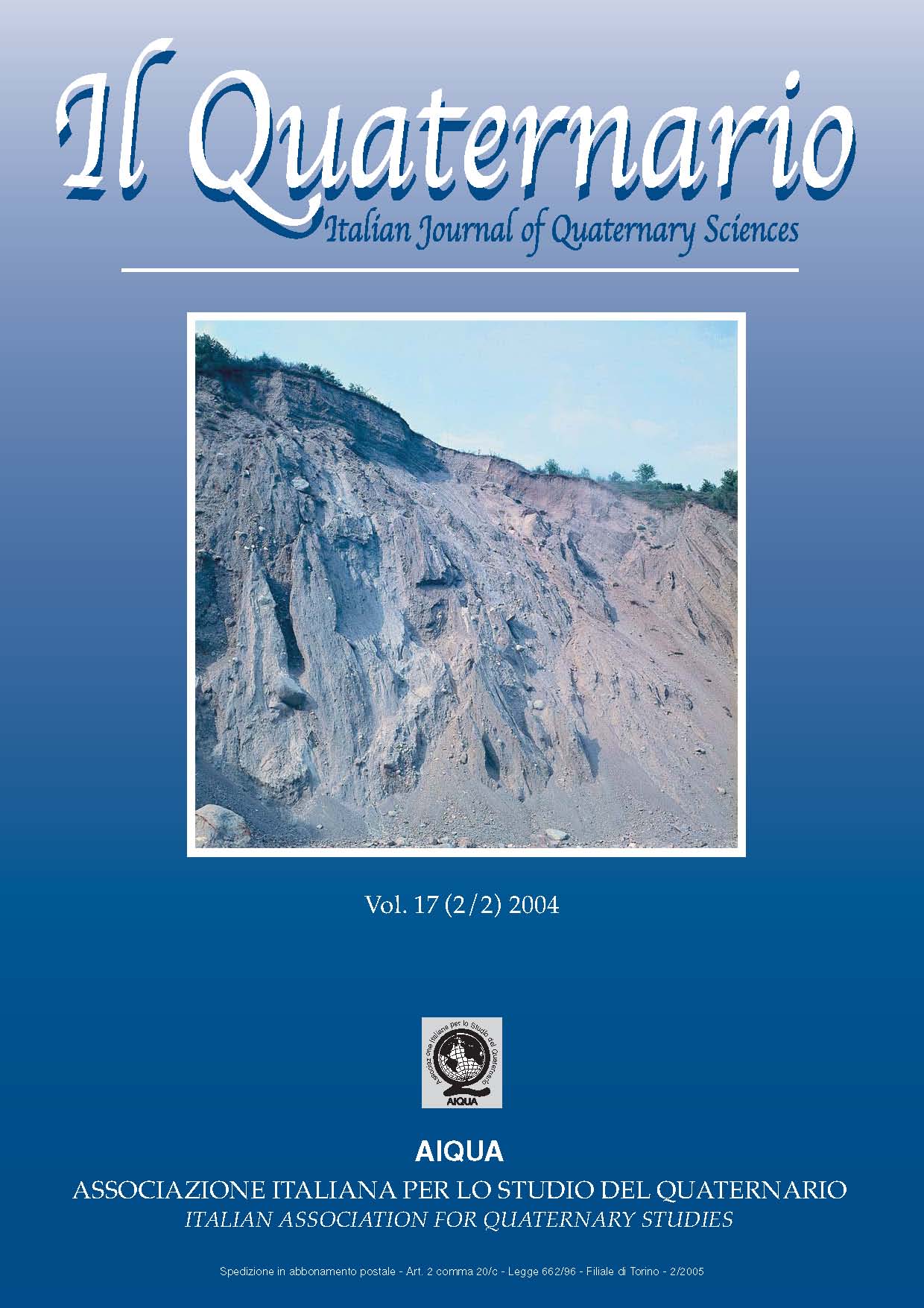I DEPOSITI CEMENTATI DEL GOLFO DI TRIESTE (ADRIATICO SETTENTRIONALE): DISTRIBUZIONE AREALE, CARATTERI GEOMORFOLOGICI E INDAGINI ACUSTICHE AD ALTA RISOLUZIONE
Main Article Content
Abstract
E. Gordini, R. Marocco, G. Tunis & R. Ramella, The cemented deposits of the Trieste Gulf (Northern Adriatic Sea): areal
distribution, geomorphologic characteristics and heigh resolution seismic. IT ISSN 0394-3356, 2004.
Echo-sounding profiles, lateral scanning echo-sounding surveys and scuba divings carried out in several years allowed the identification of at least 250 rocky outcrops in the Gulf of Trieste. The analysis of the areal distribution and of the main geomorphic characteristics (extension, shape, thickness, etc.) showed that these very peculiar rocks lie beyond the coastal sedimentary prism (13 to 21 m depth), in correspondence to the shelf sands, displaying a NE-SW direction, reaching the Gulf of Venice. The rocky outcrops are located, almost in continuum, along the southern sides of the banks (the morphological reliefs called “Trezze”), and on the small depressions among them, where they reach the maximum values of density of about three outcrops squared kilometres. The outcrops are made of sandstone and they emerge from shelf sands usually (73%) showing planar-tabular morphotypes (with clear stratification), sometimes massive or pinacular, always covered by cap reefs. Bubbling reefs, locally defined as “bromboli” are rarely present. Their mean thickness is one metre and they show a preferential elongation following the 13, 16 and 19 m bathymetric countours.
The statistical analysis performed on morpho-sedimentological parameters characterising these subaqueous outcrops has shown that
they are essentially strictly related to the morphology and the water depth such as sediment texture and outcropping type. On the
basis of specific characteristics, the rocky outcrops can be divided, at least, into four main groups.
Direct diving observations highlighted that sandstones are often fractured orthogonally to stratification and appear associated to more irregular trends and small caves or erosional niches at the base. These fractures do not reveal the presence of roots nor do they suggest a further extension under the sea-bed.
The sub-bottom profile Chirp methodology appeared a good application in the definition of the buried geometric characteristics of
these numerous rock outcrops present in the seafloor of the Trieste Gulf, but also allowed to define a good sedimentological characterization of the sub-surficial sediments. The acoustic penetration of the seismic signal is varying from 7 to 14 meters being notably influenced by the type of investigated sediment, while the resolution range is between 20 and 30 cm.
From this study it has emerged that the investigated rock outcrops reveal a limited, or sometimes absent radical development within the sandy mattress, of the system TST (Transgressive Sistem Tract). The thickness of the rocky outcrops (about 1 m) puts them of to
the top of the continental deposits of the LST. In this situation the most reasonable hypothesis about their genesis is referable to lithification processes in the ancient lowland before the sea transgression or to recent cementation processes of the sea foundation. Then, they outcropped and underwent the colonization of calcareous algas, Briozoas and Serpulidi, which provideld actual configuration.
The sedimentary body LST is constituted by acoustic facies marked by parallel reflections. They appear predominantly plain, of
varying amplitude and frequency, with the main reflectors few meters spaced and thin packages, characterized by less reflectivity. In
this alluvial sedimentary blanket, peat horizons and a diffused presence of gas have been recognized, as revealed by transparent
facies in the seismic profiles.
On the basis of the above data, as preliminary results, due to the high number of surveyed and hypothesised rocky outcrops along
with their shape and areal distributions, it is presumed that they were not produced by a single process, but that several different processes interacted on the littoral and marine environment, as well as on alluvial deposits of the paleo-plain, which outcropped as the
consequence of the Versilian transgression.
Article Details
Section

This work is licensed under a Creative Commons Attribution-NonCommercial-NoDerivatives 4.0 International License.
The Author grants usage rights to others using an open license (Creative Commons or equivalent) allowing for immediate free access to the work and permitting any user to read, download, copy, distribute, print, search, or link to the full texts of articles, crawl them for indexing, pass them as data to software, or use them for any other lawful purpose.

